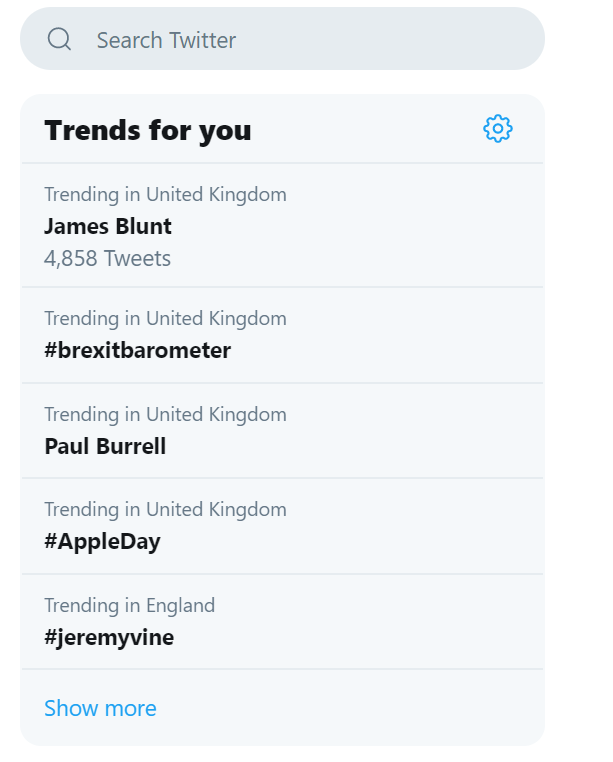Quality content is central to a successful marketing strategy.
But what is ‘quality content’? Unfortunately, much of the answer lies in personal taste. The upside is that there are things you can do to impress both human and robot.
So, it isn’t merely a case of just writing something and shoving it out. The content creation requires some finesse.
We’ll share some tips to help you write posts that will rank high on Google and be a valuable resource for your readers.
Content for humans or for Google: which is more important?
SEO specialists will tell you to write for the human first. Though search engines scan your content for essential assets, it’ll be people that are relying on it for information that’s both informative and entertaining.
Google’s main priority is ensuring your content meets the searcher’s purpose. This flows on to the second tier of expertise, authoritativeness and trustworthiness.
‘Google’s main priority is ensuring your content meets the searcher’s purpose’
One thing you must do is include information about who is responsible for the content with a byline or a link to the creator’s bio or website. Articles with generic ‘staff’ or ‘team’ credits will be down-ranked by Google.
Finding trending topics
The quickest way to find topics is to look at what’s in the news and on Twitter’s own trending topics (example below). It can give you a hook for a more detailed explainer or feature.

For longer term pieces you need to know what questions people are asking around the topic which either aren’t being answered, or at least not from the angle of the demographic you’re looking to target.
Answering reader questions and pinning down keywords
As time becomes increasingly scarce for readers, they’ll want answers to their questions – fast. A lot of browsing time is spent asking questions in search engines, giving you the opportunity to drive traffic if you know what they’re looking for.
Search engines work in a simple way: people ask questions, the search engine finds webpages it thinks will answer the questions. If a reader clicks on your page and clicks straight off that generally means that you haven’t answered their question.
Google Trends will, of course, tell you what’s trending on Google in different parts of the world. You should also try websites like answerthepublic.com and Keyword Sheeter. They generate keywords and commonly asked questions around a topic of your choosing. If you want detailed results, use paid-for platforms like SEMrush and ahrefs which are more sophisticated.
Look for searches that are higher in volume and lower in competition. They’ll be more obscure, so it helps to know exactly who your target reader is to maximise the reach of your posts.
It’s also wise to focus on long-tail keywords. These are three or four words long and are generally less competitive, but they will target a niche. Rather than a short-tail keyword like cake-recipes which will be hugely popular and competitive, go for easy-victoria-sponge-recipes.
How often should I post?
This is a tricky one to give a clear answer to. Once a month is a decent starting point if you’re doing a side hustle and your website isn’t your main priority. We’d say that the more frequently you blog, the easier it gets – as you become more confident you can ramp up your output to once a fortnight, then once a week and possibly even a couple of times a week.
The most crucial component is consistency. Posting on the same day of the week or the month will encourage visitor loyalty as they’ll know when to come back to see new posts. Google will pick up on this regularity too.
> Read: 9 tricks to boost your small business blog posts
What length should my website posts be?
You might think that because people are time-poor – and increasingly attention-poor – you should keep your content snappy.
Statistically, and perhaps surprisingly, longer posts perform better. They should be at least 300 words but ideally, aim for articles that are at least 1500 words. This is because you’re more likely to be using keywords that people are searching for, including those long-tail keywords.
If you don’t have the time to create a long piece regularly, mix it up with shorter pieces. Match the length with the depth and complexity of the topic you’re discussing.
Creating a title tag and meta description
Your title tag and meta description are parts of HTML code in the header of a webpage that help search engines understand what content is on a page.
The title tag acts like an article headline, appearing on browsers, search engine results pages and external sites such as social media platforms. It should include relevant keywords and phrases that describe what the page is about.

Your meta description is there as a synopsis, similar to the standfirst in a print article.
Code these if you have the knowhow but most website builders will have the functionality to do it for you.
Ensure your content is relevant and specific, placing keywords towards the front of the title tag, which you should keep between 60 and 64 characters. Have a unique meta description for every page on your site. Write enough to tell the reader what the article is about but leave some intrigue so that they’ll be enticed to read. As for character count, limit meta descriptions to 150-154 characters.
Writing effective long-form content for humans and Google
With long-form writing it can be easy to get stuck in the detail, risking a boring slog of a post that’s littered with jargon. Restrict waffle, use colourful language and write in a tone that will make a large amount of technical detail easy to read. This will help readers to reach the end of your piece and up your session duration on Google Analytics.
Break your post down into subheadings. Your reader is less likely to read a lengthy article if it’s an indigestible blob of text. You can earn a higher ranking with Google if you phrase your subheadings as questions that users might be searching for.
The ‘What length should my website posts be?’ subheading above works in this case.
Then there are the web-based elements to create interest on your post. Firstly, you need to know that links are vital. Include relevant external links that will give users the extra information they’re after. It improves your ranking and gives your post more credibility if you link to governmental bodies, universities and other reliable organisations.
To boost your traffic and clicks, link internally too. If you don’t feel an idea is interesting enough to discuss in your main piece, create a shorter explainer that you can link to. This is known as hub and spoke content creation. Again, relevance is the driver here. Think about how your reader’s thought process will progress after reading the article you’re writing.
Insert images to break up the text and pull out key phrases as drop quotes to give readers who are scanning the piece a better sense of what it’s about. As for search engines, content with video ranks higher on Google as the rich data enhances your post. If you’re embedding a video, it’s always safest to check with the original creator before you post.
We’re sure that building these steps into your content creation will see your posts reaching a much wider audience through social media shares and your newly improved article rankings on Google.
For more info on the topics we’ve covered, take a peek at the following guides:
- Content marketing strategy – Guide for small businesses (2019 Edition)
- How often should I blog – and how long should each post be?
- How to write content that both Google and your audience will love





